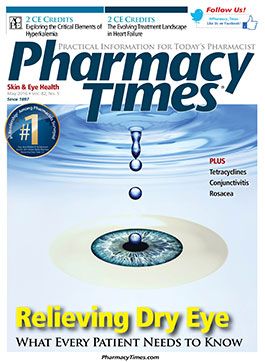Publication
Article
Pharmacy Times
3 Critical Ways Health Technology Optimizes Care
Author(s):
An increasingly more seamless and accessible health information technology infrastructure is helping shift episodic and reactive health care to proactive and continuous health care.
We are in the midst of a veritable digital health revolution—it is undeniable. An increasingly more seamless and accessible health information technology (health IT) infrastructure is helping shift episodic and reactive health care to proactive and continuous health care.
According to the Office of the National Coordinator, health IT is defined as ”the application of information processes involving computer hardware and software that deals with the storage, retrieval, sharing, and use of health care information, data, and knowledge for communication and decision making.”
Widespread use of health IT has already starting providing solutions to some of the major challenges in health care, such as inefficient use of information, access to health care, and cost. Vital information is available whenever and wherever it is needed.
Below are some of the ways that the health care landscape has already shifted due to the integration of health IT:
1. Leveraging patient data helps pharmacists perform medication therapy management (MTM). MTM services made easier by health IT include comprehensive medication reviews, medication reconciliation, drug use review, ordering and reviewing of lab tests, immunizations, drug dosage adjustments, and identification of gaps in care. As advanced MTM becomes more ubiquitous, health providers will have a growing need for information obtained through health IT exchanges.
Health IT has also proved critical in reducing medication errors. A report from the Institute of Medicine, “To Err is Human,” suggests that if implemented appropriately, health IT should:
- Reduce reliance on memory
- Standardize terminology
- Use constraints, thereby forcing functions, protocols, and checklists
- Minimize data handoffs
2. Prescribers and pharmacists are in closer contact than ever before. Closer collaboration between all health providers has obvious benefits for patients. For older patients, in particular, connectivity promotes coordination of care that can circumvent the need for acute care while more effectively managing postacute care. However, with the shift from fee-for-service models to value-based care, all health providers have a greater incentive to communicate with all members of the care team in order to optimize patient care across multiple settings.
For example, more community pharmacists with health IT access are moving toward providing MTM and participating in arrangements, like accountable care organizations, in which they are also incentivized to improve population management and care quality. Instead of just indicating that MTM was performed, the pharmacists could contract to be measured and incentivized based on cost and quality metrics achieved across certain patient panels, such as those with diabetes, high cholesterol, and hypertension.
3. Telemedicine is bridging the patient—provider gap. Health IT has been helping to fill gaps—based on knowledge and geography— between patients and their health providers. Health IT consulting firm IHS Technology released a report in 2014 that found that the number of patients worldwide who will be using telehealth services will increase from less than 350,000 in 2013 to about 7 million in 2018.
This increase in telehealth services is likely a response to the increasing patient demand for a care team that is connected and responsive to each patient’s individual needs. The number of patients actively participating in their own health care is growing, especially with the rise in wearable health devices—another health IT phenomenon shaking up the industry.
In addition, across the country, telemedicine has helped to bring remote pharmacy services to patients who reside in rural communities. In North Dakota, which launched the first telepharmacy program in the United States in 2002, telepharmacies extend services to 80,000 patients who would not otherwise have access to pharmacy services. In certain parts of that state, a 1-way trip to the pharmacy can exceed 50 miles.







